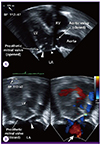1. Bouvet A. Human endocarditis due to nutritionally variant streptococci:
Streptococcus adjacens and
Streptococcus defectivus
. Eur Heart J. 1995; 16:Suppl B. 24–27.

2. Ruoff KL. Nutritionally variant streptococci. Clin Microbiol Rev. 1991; 4:184–190.

3. Roberts RB, Krieger AG, Schiller NL, Gross KC. Viridans streptococcal endocarditis: the role of various species, including pyridoxal-dependent streptococci. Rev Infect Dis. 1979; 1:955–966.

4. Tuazon CU, Gill V, Gill F. Streptococcal endocarditis: single vs. combination antibiotic therapy and role of various species. Rev Infect Dis. 1986; 8:54–60.

5. Stein DS, Nelson KE. Endocarditis due to nutritionally deficient streptococci: therapeutic dilemma. Rev Infect Dis. 1987; 9:908–916.

6. Frenkel A, Hirsch W. Spontaneous development of L forms of streptococci requiring secretions of other bacteria or sulphydryl compounds for normal growth. Nature. 1961; 191:728–730.

7. Bouvet A, Grimont F, Grimont PA. Intraspecies variations in nutritionally variant streptococci: rRNA gene restriction patterns of
Streptococcus defectivus and
Streptococcus adjacens
. Int J Syst Bacteriol. 1991; 41:483–486.

8. Kawamura Y, Hou XG, Sultana F, Liu S, Yamamoto H, Ezaki T. Transfer of
Streptococcus adjacens and
Streptococcus defectivus to Abiotrophia gen. nov. as
Abiotrophia adiacens comb. nov. and
Abiotrophia defectiva comb. nov., respectively. Int J Syst Bacteriol. 1995; 45:798–803.

9. Akkoyunlu Y, Iraz M, Kocaman G, Ceylan B, Aydin C, Aslan T.
Abiotrophia defectiva endocarditis presenting with hemiplegia. Jundishapur J Microbiol. 2013; 6:e8907.
10. Brouqui P, Raoult D. Endocarditis due to rare and fastidious bacteria. Clin Microbiol Rev. 2001; 14:177–207.

11. Biswas S, Rolain JM. Use of MALDI-TOF mass spectrometry for identification of bacteria that are difficult to culture. J Microbiol Methods. 2013; 92:14–24.

12. Heath CH, Bowen SF, McCarthy JS, Dwyer B. Vertebral osteomyelitis and discitis associated with
Abiotrophia adiacens (nutritionally variant streptococcus) infection. Aust N Z J Med. 1998; 28:663.

13. Okada Y, Kitada K, Takagaki M, Ito HO, Inoue M. Endocardiac infectivity and binding to extracellular matrix proteins of oral
Abiotrophia species. FEMS Immunol Med Microbiol. 2000; 27:257–261.

14. Yang YS, Shang ST, Lin JC, Chiu CH, Chang FY. A ruptured cerebral mycotic aneurysm caused by
Abiotrophia defectiva endocarditis. Am J Med Sci. 2010; 339:190–191.

15. Takayama R, Motoyasu M, Seko T, Kuroda K, Yamanaka T, Obe T, Yada T, Konishi T, Fujinaga K, Kondoh C, Mizutani T. A case of isolated tricuspid valve infective endocarditis caused by Abiotrophia defectiva
. Int J Cardiol. 2007; 118:e3–5.
16. Baddour LM, Wilson WR, Bayer AS, Fowler VG Jr, Bolger AF, Levison ME, Ferrieri P, Gerber MA, Tani LY, Gewitz MH, Tong DC, Steckelberg JM, Baltimore RS, Shulman ST, Burns JC, Falace DA, Newburger JW, Pallasch TJ, Takahashi M, Taubert KA; Committee on Rheumatic Fever, Endocarditis, and Kawasaki Disease. Council on Cardiovascular Disease in the Young; Councils on Clinical Cardiology, Stroke, and Cardiovascular Surgery and Anesthesia; American Heart Association; Infectious Diseases Society of America. Infective endocarditis: diagnosis, antimicrobial therapy, and management of complications: a statement for healthcare professionals from the Committee on Rheumatic Fever, Endocarditis, and Kawasaki Disease, Council on Cardiovascular Disease in the Young, and the Councils on Clinical Cardiology, Stroke, and Cardiovascular Surgery and Anesthesia, American Heart Association: endorsed by the Infectious Diseases Society of America. Circulation. 2005; 111:e394–434.
17. Henry NK, Wilson WR, Roberts RB, Acar JF, Geraci JE. Antimicrobial therapy of experimental endocarditis caused by nutritionally variant viridans group streptococci. Antimicrob Agents Chemother. 1986; 30:465–467.

18. Lin CH, Hsu RB. Infective endocarditis caused by nutritionally variant streptococci. Am J Med Sci. 2007; 334:235–239.

19. Chung DR, Kim K, Chae JG, Uhm WS, Kim YS, Song JH, Song JK, Kim JJ, Park SW, Ryu JS, Lee SY, Pai CH. Two cases of infective endocarditis with nutritionally variant streptococci. Korean J Med. 1996; 50:244–249.
20. Seo MR, Park YS, Kim EJ, Lee HN, Oh KY, Seo YH, Choi CH. A case of endocarditis due to
Granulicatella adiacens
. Infect Chemother. 2010; 42:311–314.







 PDF
PDF ePub
ePub Citation
Citation Print
Print



 XML Download
XML Download